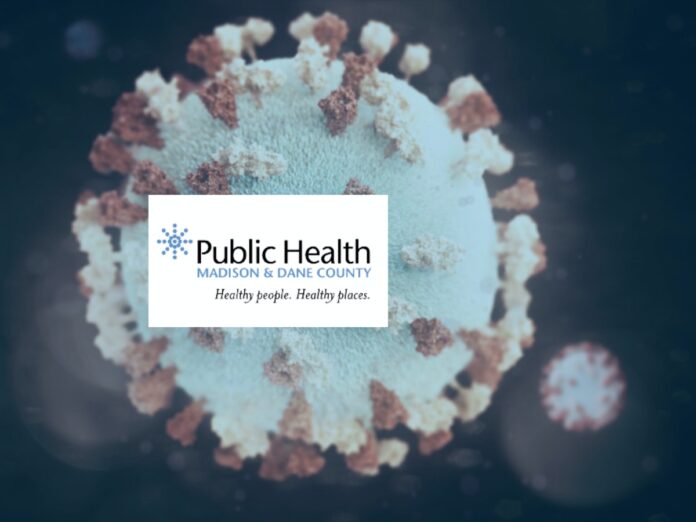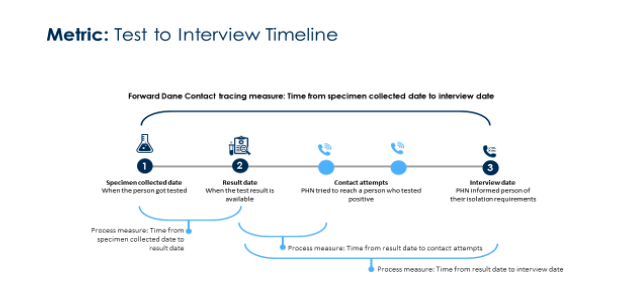I feel like its a bit of a non-answer and unsatisfactory. They say they can’t get the data and they agree with some parts of the letter. In responding to the concerns of the alders and supervisors, they don’t answer the concern about the Board of Public Health not meeting during the pandemic to allow public, alder and supervisor input. Here’s the pdf: Forward Dane Response Memo_5.26.20
MEMO EMAIL
Please see the attached memo that addresses questions raised about the Forward Dane plan.
Some additional resources regarding Forward Dane include:
Forward Dane
Sign up for sector specific newsletters
Reopening Readiness Assessment
Thank you for your continued support to keep Dane County healthy and safe.
Janel
MEMO
DATE: May 26, 2020
TO: City of Madison Common Council Members: Patrick Heck, Marsha Rummel, Max Prestigiacomo, Syed Abbas, Tag Evers, Grant Foster, Samba Baldeh, and Rebecca Kemble and Dane County Board of Supervisors: Heidi Wegleitner, Elena Haasl, Yogesh Chawla and Michele Ritt.
FROM: Janel Heinrich, MPH, MA, Director, Public Health Madison & Dane County
SUBJECT: Forward Dane
Dear All,
I appreciate the shared desire to protect the health and well-being of all Dane County residents. Until we have a vaccine, treatment, or more research around immunity to COVID-19 we have limited tools to fight this pandemic.
Forward Dane is intended to provide a framework to guide our community forward in a way that mitigates risk of transmission of COVID in the places that we live, learn, work, and play. Public health orders are one tool available to minimize risk of transmission. As you outline in your letter, the majority of the work of Public Health Madison & Dane County is focused on the other tools we have available to us to stop the chains of transmission via testing, isolation of cases, contact tracing, and quarantine of contacts. Before I speak to these activities, I’d like to focus on Forward Dane.
The goals of Forward Dane are multifold:
- to use data and science to inform our decision making to support our community’s ability to slowly and safely return to recreation and economic activity
- to keep Dane County moving forward through the phases of the plan, realizing this may take time as we continue to measure locally tailored metrics related to our ability to contain and mitigate the spread of disease
- to use our public health knowledge to protect Dane County residents and workers by putting requirements into orders that assure appropriate preventive measures and risk mitigation strategies are in place for everyone when they live, learn, work, and play
- to be as transparent as we can be with our community members and business owners as we navigate an unprecedented pandemic of a novel disease
The metrics we have identified in Forward Dane are the result of a deep assessment of the landscape of existing plans—local, regional, state, national, governmental, nongovernmental. The metrics for moving through phases are locally tailored, and built using both national guidance as well as our historic data. As a smaller jurisdiction with a low-incidence epidemic, the state-level metrics are not as sensitive as we need to detect meaningful change. Hence our nine metrics outlined in Forward Dane and described in the attached spreadsheet (Appendix A). We are in alignment with most other plans—a steady, stepwise re-opening that uses metrics based in epidemiology and health system capacity. We appreciate and value the COVID-local metrics cited in your letter. Unfortunately, these metrics were released days after our Forward Dane plan went public. The Forward Dane metrics largely align with the suggested COVID- local metrics.
In addition to the Forward Dane metrics, we are utilizing process measures (Appendix A) to understand the reasons behind the values that show up in the Forward Dane metrics. We have shared the rationale behind the Forward Dane metrics in a data snapshot available here. These and all metrics have detailed sourcing, threshold justification, and codebook in a spreadsheet that we are happy to share upon request.
Our data team has years of training and experience working at state and national organizations and world-class universities. They also regularly consult with partners at the University of Wisconsin and Department of Health Services who are experts in this field.
In response to the questions raised in your letter:
Infection Rate:
With a median number of new cases per day at 7, (or 10 for the latter half of May, when community- based testing started ramping up) Dane County has seen low numbers of new cases over the course of the epidemic. Consequently, demonstrating a statistically significant and meaningful decline would be challenging. As a result, we have adopted a metric for a low incidence threshold that is below 1 case per 100,000. We use 0.71 cases per 100,000 based on CDC’s low incidence plateau threshold of less than 10 cases per 100,000 over 14 days. The Forward Dane metrics are more tailored to our community than the COVID-local plan metrics referenced in the letter.
Lab reporting timeliness
We certainly agree that rapid lab reporting is vital for contact tracing to be effective. This is why we’ve linked lab timeliness and contact tracing together in one bound metric. A majority of the tests are currently being returned within 24 hours, with 70% of tests being reported within 24 hours since the beginning of the epidemic. Our Forward Dane metric is “greater than 85% of all new cases are provided isolation guidance by public health within 48 hours of test collection.” This means we start the contact tracing clock the moment a specimen is collected. Not when PHMDC learns about it, but the moment the specimen is collected. This requires both rapid lab processing and rapid contact tracing. This is another important metric of Forward Dane that the COVID-Local plan does not account for.
Contact Tracing:
Our capacity for contact tracing is, and has been, sufficient during our COVID response. The recommendation for 30 contact tracers per 100,000 (~160 contact tracers for a county the size of Dane) does not fit our local conditions at this time. We have internal metrics (including a nationally-developed contact tracing calculator) to help us determine if contact tracing capacity is sufficient and are monitoring this regularly to assure we are scaling our contact tracing capacity accordingly. Our test metric to conduct 800 tests per day (152/100,000 population) means that at a 3% positivity rate, we would expect to see 24 cases per day. Conservatively, this would require 22 contact tracers (24 cases would generate approximately 50 contacts, based on our actual rate of 2.1 contacts/case) using a rate of 2 cases per case tracer per day and 5 contacts per contact tracer per day). At a positivity rate of 5%, we would expect to see 40 cases per day. This could require 36 contact tracers. Our positivity rate has been consistently below 3%–hovering between 0.9% and 1.2% on a biweekly basis. We currently have a contact tracing team that exceeds that required to support a 5% positivity rate. Should we require additional contact tracing staff, we are prepared to activate additional cohorts of contact tracers.
At-risk populations
We agree that long-term care facilities (LCTF) represent a priority population. 28% of cases in the last 28 days were in long-term care or congregate living facilities (including both residents and workers). This is why PHMDC is working with the state health department to facilitate more testing. Our contact tracing team has nurses who specifically follow up with long-term care facilities. Additionally, PHMDC is currently recruiting for two Infection Control Prevention Specialist who would provide additional technical assistance to long-term care facilities. A Forward Dane process measure includes looking at outbreaks in LTCFs. In fact, many of our process measures (these are measures that inform where a ‘breakdown’ has occurred when a Forward Dane metric edges closer to red) are similar to those indicated in your letter. (see process measures in Appendix A).
Additionally, we are grateful that the City of Madison and Dane County have allocated resources to create additional housing solutions for those who are housing insecure as well as a Medical Respite Center (MRC) to support quarantine and isolation for those who are unable to do so at home. This is in addition to the creation of a $250K fund built into the PHMDC budget to support individuals with isolation and quarantine resources such as temporary shelter, food, cleaning supplies, or assistance with bills while unable to work.
Inpatient and ICU capacity in the region
The data source Milwaukee uses to report inpatient and ICU capacity has been an identified challenge. We have been communicating regularly with our major health system partners in Dane County to understand capacity. We recognize that Statewide, health systems have different definitions of these variables. There is effort to achieve consistency in definition but without that, the variables can be misleading and not meaningful.
The variables with consistent definitions—COVID ICU patients and COVID-related inpatients—are presented daily on our dashboard. For Forward Dane metrics, we utilize the same metric as the state— hospitals reporting whether they are able to treat patients without crisis case, which takes several factors into account beyond ICU capacity, including adequate staffing to care for patients, critical supplies to care for patients, and ability to care for patients without utilizing non-patient care areas.
How to determine if we need to retighten?
The combination of the dashboard metrics and process metrics that would indicate that we are unable to care for, contact within a timely fashion, and quarantine or isolate individuals to stop the spread of disease are of critical importance to future decision making. Depending on the future trajectory of this virus, if the metrics start to turn red, we are prepared to reconsider whether in the best interest of public health we would need to potentially move to a more restrictive phase to slow the spread of this disease.
As you are also well aware, this has been an extremely challenging time for both state and local public health. With the strike-down of Safer at Home, the responsibility for setting re-opening plans fell to the local level. We have been working diligently to rapidly assess the landscape of existing plans—local, regional, state, national, governmental, nongovernmental—and worked to develop one that was scientifically sound but also rational. We are in alignment with most other plans—a steady, stepwise re-opening that uses metrics based in epidemiology and health system capacity. The metrics for moving through phases are locally tailored and built using both national guidance as well as our historic data.
Thank you for your ongoing support and commitment to using data to drive decisions about how to re- open in ways that keep our community safe and healthy,
Regards,
Janel Heinrich, MPH, MA, Director, Public Health Madison & Dane County






